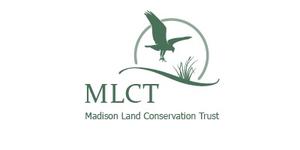The Northern portion of the Neck River Uplands, connects to the Southern portion of the Neck River Uplands.
The Northern portion consists of trails vary in terrain. For instance, this portion of the trail has rocky ridges up to 30-feet tall. The Neck River Uplands North also offers sights of wildlife like turkeys, foxes, and birds throughout the forest. Along the trail are views of three beautiful creeks flowing into the Neck River, a lush canopy of chestnut and red oaks in the warmer weather, and a pretty autumnal mosaic in the colder weather.
This 115 acre preserve lies in the geographic center of Madison, immediately west of Route 79. It contains two parcels, one lying north of Route 80, the other, south. The topography of the Uplands is determined by undulating bedrock, which forms very close ridges and plateaus oriented north-south.
These features influence the flora and fauna of these areas. The dry plateaus and rocky ridges have thin soil, so rainwater quickly drains downhill, leaving little moisture behind. But slow-growing chestnut and red oaks, along with some beech and red maples, create a lacy canopy overhead. The fruits of these trees offer a high calorie source of fats and carbohydrates that help deer put on weight as colder weather approaches.
Turkeys, chipmunks, squirrels and white-footed mice, who eat the acorns, and hickory and beech nuts, dropped from above, have been seen here. However, these birds and rodents fall prey to coyotes and their smaller relatives, the foxes. Numerous rocky overhangs offer ideal den sites for these canines.
Trees on the plateaus suffer from exposure and the dry conditions. The cavities created by the death of these trees for birds such as woodpeckers and chickadees. Fallen trees and logs provide dens for opossums and raccoons. Just below the trees, mountain laurel, witch hazel, and highbush blueberries make the most of any remaining moisture.
These inclines limit shrub growth and result in more open areas. The cracks and crevices of many rocky outcrops offer shelter for bats and snakes. Increased moisture gives rise to a greater variety of trees. The slopes afford them some protection, so fewer snags develop.

From the Route 80 circle, take the exit north, towards Durham. In about a third of a mile turn left onto Princess Drive. The entrance, located at 45 Princess Drive, will be on the left in about a third of a mile. Parking is on the side of the road.
Success! A new password has been emailed to you.